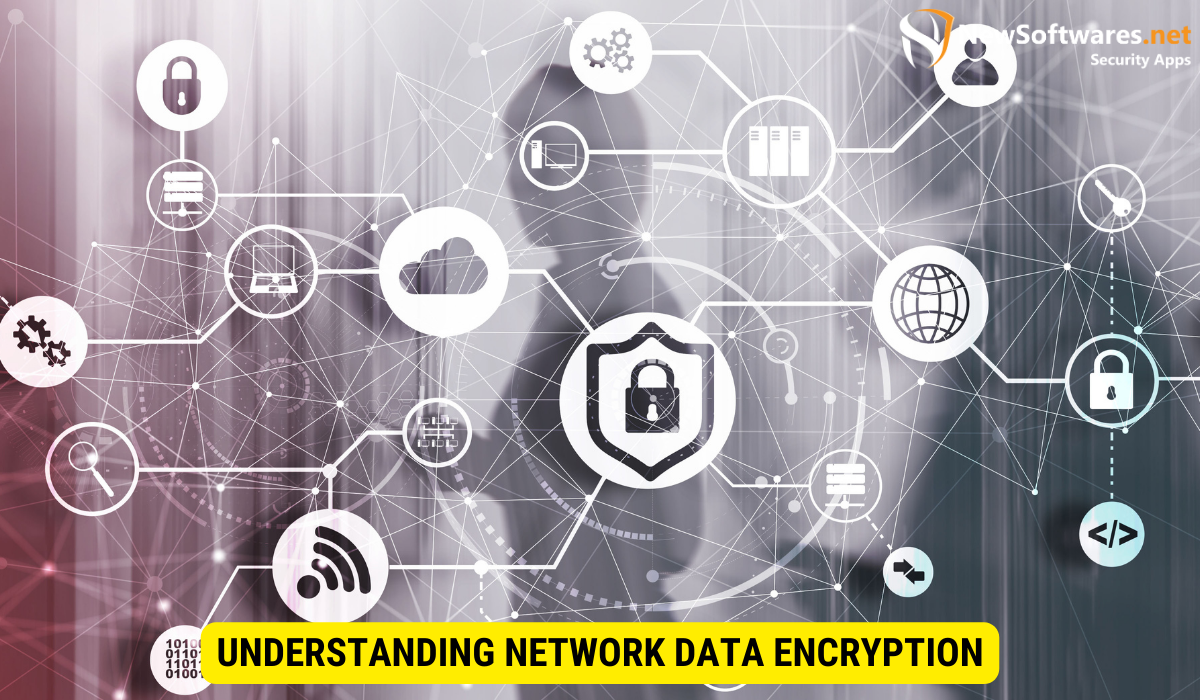Network data encryption relies on various ciphers, including symmetric key ciphers, asymmetric key ciphers, and hash functions, to protect sensitive information during transmission.
In today’s interconnected world, data security has become a top-priority for individuals and businesses alike. Encrypting data ensures that sensitive information remains confidential and protected from unauthorized access. When it comes to encrypting data across the network, choosing the right cipher is crucial. Together, we will explore the different types of ciphers used for network data encryption, factors to consider when selecting a cipher, steps to implement cipher encryption in networks, and the future of network data encryption.
Understanding Network Data Encryption

Network data encryption involves converting data into an unreadable format, known as ciphertext, using an algorithm and a secret key. This process ensures that even if the data is intercepted by an unauthorized party, it cannot be deciphered without the corresponding decryption key. Encryption plays a very important role in maintaining the secrecy and integrity of sensitive data transmitted over networks.
When it comes to network data encryption, there are several key concepts to understand. One of these concepts is the basics of data encryption. Data encryption relies on mathematical algorithms to scramble information and make it indecipherable without the proper key. There are two major encryptions: symmetric key encryption and asymmetric key encryption.
Symmetric key encryption, also recognized as top secret key encryption, uses the similar key for both encryption & decryption. This means that the sender and the recipent of the encrypted data must share the same key in order to communicate securely. This type of encryption is often used for secure communication within a closed system, such as a local network.
On the other hand, asymmetric key encryption, also recognized as public key encryption, uses a couple of keys: a public key & a personal key. The public key is used for encryption, while the confidential key is used for decryption. This allows for safe communication between parties who have never shared a key before. Asymmetric key encryption is commonly used in scenarios where secure communication over an open network, such as the internet, is required.
Encrypting network data has become increasingly important due to the raise in cyber threats and attacks. By encrypting data, organizations can protect sensitive information such as customer data, financial transactions, and proprietary business data from illegal access and potential data breaches. In today’s digital landscape, where cybercriminals are constantly evolving their tactics, network data encryption is a crucial line of defense.
In addition to protecting data from illegal access, network data encryption also helps to ensure data integrity. Encryption algorithms often include mechanisms to detect any tampering or modifications made to the encrypted data. This allows the recipient of the data to verify its authenticity and integrity, as any changes to the encrypted data would render it undecipherable.
Furthermore, network data encryption can also help organizations comply with various regulatory requirements. Many industries, for instance healthcare and finance, have specific data protection regulations that consent the use of encryption to safeguard sensitive information. By implementing proper encryption measures, organizations can demonstrate fulfillment with these regulations and avoid potential penalties or legal consequences.
It’s worth noting that while network data encryption provides a strong layer of security, it is not a foolproof solution. As with any security measure, encryption is subject to vulnerabilities and attacks. Cryptanalysis, the study of breaking encryption algorithms, is an ongoing field of research, and new vulnerabilities may be discovered over time. Therefore, it is important for organizations to stay updated with the latest encryption standards & best practices to ensure the effectiveness of their encryption implementations.
Different Types of Ciphers
There are several types of ciphers used to encrypt network data. Let’s take a closer look at symmetric key ciphers, asymmetric key ciphers, and hash functions.
Symmetric Key Ciphers
Symmetric key ciphers use the same key for both encryption and decryption. This means that the sender and the receiver must share the same secret key beforehand. Symmetric key ciphers are efficient and widely used for encrypting large amounts of data. Examples of popular symmetric key ciphers include the (AES) Advanced Encryption Standard and the Data Encryption Standard.
Asymmetric Key Ciphers
Asymmetric key ciphers, also known as public-key ciphers, use a duo of keys: a public key for encryption & a private key for decryption. The civic key is made available to anyone who wants to send encoded data, while the private key is kept secure and only accessible to the intended recipient. Asymmetric key ciphers provide a higher level of security but are computationally more intensive than symmetric key ciphers. The most commonly used asymmetric key cipher is the Rivest-Shamir-Adleman (RSA) algorithm.
Hash Functions
Hash functions are cryptographic algorithms that convert an input into a fixed-size string of characters, known as a hash value or checksum. Unlike symmetric and asymmetric key ciphers, hash functions are one-way functions, meaning the original data cannot be derived from the hash value. Hash functions are usually used for data integrity checks and digital signatures.
Choosing the Right Cipher for Network Encryption
When selecting a cipher for network encryption, several factors should be considered to ensure the security and efficiency of the encryption process.
Factors to Consider
Key factors to consider when choosing a cipher include the level of security required, the computational resources available, the speed and efficiency of the cipher, and the compatibility with existing systems and protocols.
Pros and Cons of Different Ciphers
Each cipher has its own strengths and weaknesses. Symmetric key ciphers offer high speed and efficiency but require secure key distribution. Asymmetric key ciphers provide better security but are computationally more intensive. Hash functions are ideal for data integrity checks but cannot be used for encryption and decryption.
Implementing Cipher Encryption in Networks
Implementing cipher encryption in networks involves several steps to ensure secure communication.
Steps in Cipher Implementation
The steps include generating encryption keys, securely distributing keys, configuring encryption protocols, and regularly updating encryption systems to stay ahead of potential vulnerabilities.
Ensuring Secure Encryption
To ensure secure encryption, it is essential to follow best practices, for example using strong encryption algorithms, implementing proper key management, regularly monitoring and updating encryption systems, and conducting regular security audits and assessments.
Future of Network Data Encryption

As technology continues to evolve, so do the challenges and solutions for network data encryption.
Emerging Trends in Cipher Technology
New developments in cipher technology include quantum-resistant encryption algorithms, homomorphic encryption, and post-quantum cryptography. These advancements aim to address the potential threat posed by quantum computers to existing encryption algorithms.
Challenges and Solutions for Future Encryption
With the increasing complexity of cyber threats, future encryption must address challenges such as advanced persistent threats, machine learning-based attacks, and quantum computing. Solutions may involve a combination of advanced encryption algorithms, secure key management systems, and improved security protocols.
Key Takeaways
- Network data encryption is crucial for protecting sensitive information transmitted over networks.
- Symmetric key ciphers use the identical key for encryption and decryption, while asymmetric key ciphers use a pair of keys.
- Hash functions are cryptographic algorithms used for data integrity checks and digital signatures.
- Choosing the right cipher involves considering factors such as security level, computational resources, speed, and compatibility.
- Future encryption technology must address challenges posed by quantum computing and advanced cyber threats.
FAQs
What are the benefits of using symmetric key ciphers?
Symmetric key ciphers offer high speed and efficiency in encrypting large amounts of data. They are widely used in various encryption applications.
How does asymmetric key encryption work?
Asymmetric key encryption uses a duo of keys: a public key for encryption & a confidential key for decoding. The public key is freely available, while the classified key is kept secure.
What is the role of hash functions in data encryption?
Hash functions are important for data integrity checks and digital signatures. They provide a way to verify the integrity of data without revealing the original information.
What factors should be considered when selecting a cipher?
Factors to consider include security requirements, computational resources, speed, and compatibility with existing systems and protocols.
What are the emerging trends in cipher technology?
Emerging trends include quantum-resistant encryption algorithms, homomorphic encryption, and post-quantum cryptography.
Conclusion
Choosing the right cipher for network data encryption is a critical decision that can have a important impact on data security. By understanding the different types of ciphers, factors to consider when selecting a cipher, and steps to implement cipher encryption in networks, organizations can enhance the security of their data transmissions. As technology advances, future encryption solutions will need to address emerging challenges and incorporate innovative cryptographic techniques to make sure the confidentiality and integrity of network data.
